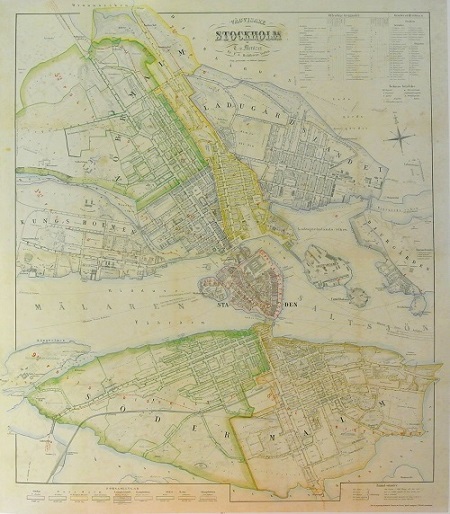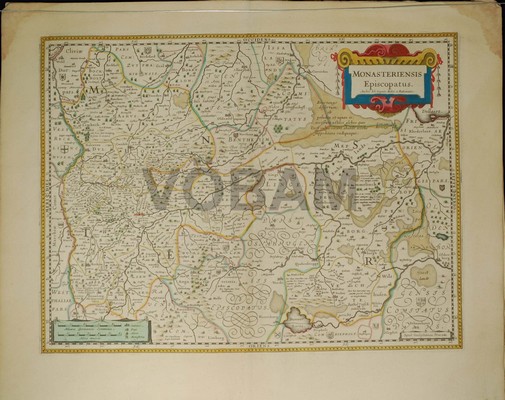1606-1665.
Svärfader till Jallott Hubert.
Editor and Enlumineur de la Reine, au bout du Pont Neuf proche les Augustins aux Deux Globes.
Bland arbeten.
Plans et profils de la Ville de Paris. 1650.
Provinces de France et Espagne. 1655.
Carte Générale de l'Isle de France. 1648.
Plan Paris. 1645.
Tooley's Dictionary of Mapmakers.
Född 1759 23/8 på Huvudsta i S:t Pers sn (Sthlm), död 1836 5/9 på Katrinelund i Lindesbergs sn (Ör.).
Lantmätare. Gravör. Son av kronobefallningsmannen Samuel Johan L, och Ingrid Margareta Vallberg. Student vid Uppsala universitet 1777. Avlade lantmäteriexamen 1783. Förste lantmätare i Örebro län 1802-34.
Bland arbeten.
Karta över Porla källa, 1815.
Hultmark, 1944.
1740-1817. Född och död i Paris.
Fransk geograf. Verkade som lärare i geografi och gav bl.a. ut 'Apercu historique et géographique des Quatre Parties du Monde' (1790), 'Des usage de la Sphère, des globes céleste et terrestre' (1790) och 'Description géographique et historique des peuples les plus renommés de l'Europe ancienne (1809). Under 1790-talet ansvarade han för olika nyutgåvor av Robert de Vaugondys atlas och gav även ut 'Nouvel Atlas portatif de la Géographie ancienne' (1809) samt 'Atlas élémentaire' som kom i flera utgåvor.
Bland arbeten.
Apercu historique et géographique des Quatre Parties du Monde.
Des usage de la Sphère, des globes céleste et terrestre.
Description géographique et historique des peuples les plus renommés de l'Europe ancienne.
Nouvel Atlas portatif de la Géographie ancienne.
Atlas élémentaire.
Nouv. biogr. gen. - Phillips.
Stockholm - Mentzer ca 1860.
Biskopsdömet Münster. - Blaeu 1643/44.
Frisius, Gemma. [Reinerszoon, Jemme.]
Biografiska uppgifter:9 december 1508 - 25 maj 1555.
Gemma Frisius was a physician, mathematician, cartographer, philosopher, and instrument maker. He created important globes, improved the mathematical instruments of his day and applied mathematics in new ways to surveying and navigation.
Frisius was born in Dokkum, Friesland (present-day Netherlands) of poor parents, who died when he was young. He moved to Groningen and studied at the University in Leuven beginning in 1525. He received the degree of MD in 1536 and remained on the faculty of medicine in Leuven for the rest of his life. His oldest son, Cornelius Gemma, edited a posthumous volume of his work and continued to work with Ptolemaic astrological models.
While still a student, Frisius set up a workshop to produce globes and mathematical instruments. He became noted for the quality and accuracy of his instruments, which were praised by Tycho Brahe, among others. In 1533, he described for the first time the method of triangulation still used today in surveying. Twenty years later, he was the first to describe how an accurate clock could be used to determine longitude. Jean-Baptiste Morin (1583–1656) did not believe that Frisius' method for calculating longitude would work, remarking, 'I do not know if the Devil will succeed in making a longitude timekeeper but it is folly for man to try.'
Frisius created or improved many instruments, including the cross-staff, the astrolabe and the astronomical rings. His students included Gerardus Mercator (who became his collaborator), Johannes Stadius, John Dee, Andreas Vesalius and Rembert Dodoens.
A lunar crater has been named after him.
Bland arbeten:
(Cosmographia (1529) von Petrus Apianus, annotated by Gemma Frisius)
De principiis astronomiae et cosmographiae (1530)
De usu globi (1530)
Libellus de locorum describendorum ratione (1533)
Arithmeticae practicae methodus facilis (1540)
De annuli astronomici usu (1540)
De radio astronomico et geometrico (1545)
De astrolabio catholico (1556)



